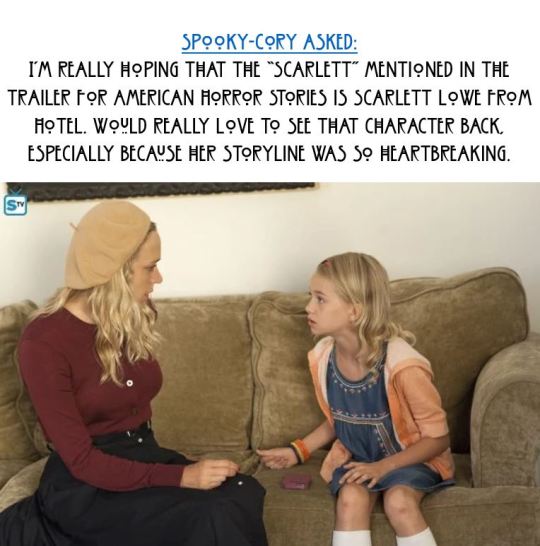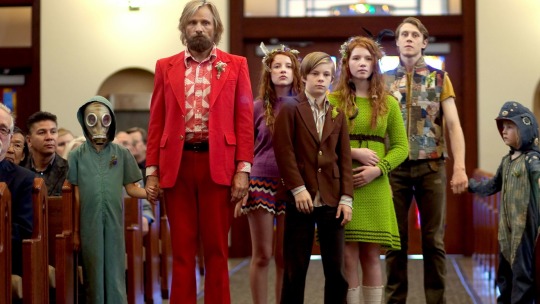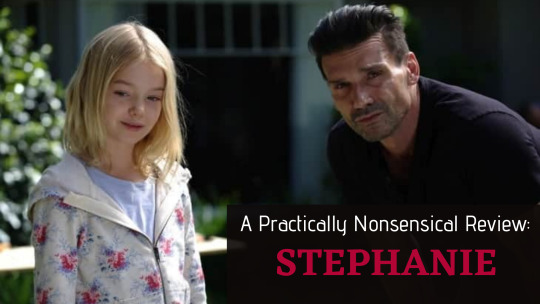#shree crooks
Text
The Glass Castle

Movies watched in 2023
The Glass Castle (2017, USA)
Director: Destin Daniel Cretton
Writers: Destin Daniel Cretton & Andrew Lanham
Mini-review:
I don't really know how to feel about this movie, to be honest. On the one hand, the whole cast does a phenomenal job, both adults and children. The film is also very handsomely made. However, I felt like it struggled when it came to choosing a tone. It wants to be a somewhat schmaltzy tale about overcoming obstacles and finding your place in the world, but it also wants to be a gritty story about a woman who went through a really harsh childhood. I'm sure these two elements can be properly mixed, but I just don't think The Glass Castle succeeds as often as it should. By the time the movie was over, I wasn't entirely sure about what the movie wanted me to think about its characters. One thing it did achieve is making me interested in the original memoir, cause it's clear this a fascinating story that got kind of lost in translation during the adaptation process. Also, if anyone wants to watch this movie, you should probably check the content warnings first. There are several triggering scenes and situations.
#the glass castle#destin daniel cretton#andrew lanham#jeannette walls#brie larson#naomi watts#woody harrelson#sarah snook#josh caras#bridgette lundy-paine#max greenfield#dominic bogart#joe pingue#robin bartlett#ella henderson#chandler head#sadie sink#iain armitage#charlie shotwell#eden grace redfield#olivia kate rice#shree crooks#drama#biopic#movies watched in 2023
3 notes
·
View notes
Text
Captain Fantastic
"Captain Fantastic," 2016 yapımı bir drama filmidir. Film, Matt Ross tarafından yazılmış ve yönetilmiştir. Başrollerde Viggo Mortensen, George MacKay, Samantha Isler, Annalise Basso, Nicholas Hamilton, Shree Crooks, Charlie Shotwell, Kathryn Hahn ve Frank Langella yer almaktadır.
Film, Ben Cash (Viggo Mortensen) adında bir baba ve altı çocuğunu Orta Amerika'nın ormanlık bölgelerinde eğiten bir aileyi konu alır. Ben, çocuklarına sıra dışı bir eğitim verir, doğada hayatta kalmayı öğretir ve onları entelektüel olarak geliştirmeye odaklanır. Ancak, aile, Ben'in eşi Leslie'nin intihar etmesinin ardından dış dünya ile daha fazla etkileşimde bulunmaya karar verir.
"Captain Fantastic," ailenin çocuklarının dünya görüşleriyle toplumun beklentileri arasındaki çatışmayı ve ailenin iç dinamiklerini ele alır. Film, sıradışı bir yaşam tarzını benimseyen bir baba figürünün çocuklarına olan etkileşimini ve bu etkileşimin toplumsal normlarla çatışmasını anlatır.
Viggo Mortensen'in performansı ve filmdeki çocuk oyuncuların başarılı performansları övgü almıştır. "Captain Fantastic," aile, toplum ve bireyin özgürlüğü gibi konuları derinlemesine işleyerek düşündürücü bir hikaye sunmaktadır.
#across the spiderverse#dizi#eleştiri#film#succession#ted lasso#the mandalorian#star wars#super mario#captain fantastic
16 notes
·
View notes
Text
What happened with Tulsidas ji while composing Hanuman Chalisa?
Tulsidas ji used to write Hanuman Chalisa, he used to keep the written letters carefully at night, when he woke up in the morning and looked at them, the writings in them were erased.
Tulsidas ji worshiped Hanuman ji, Hanuman ji appeared. Tulsidas told that if I write Hanuman Chalisa, someone erases in the night.
Hanuman ji said, if you want to write praise, then write of my Lord Shri Ram, not of me. At that time, Tulsidas ji thought of the first couplet of Ayodhya incident, he wrote it at the beginning of Hanuman Chalisa.
"श्रीगुरु चरन सरोज रज न���ज मन मुकुरु सुधारि।
वरनउं रघुबर बिमल जसु जो दायकु फल चारि॥
So Hanuman ji said, I am not Raghuvar. Tulsidas ji said that you and Lord Shri Ram have incarnated after receiving the same prasad, therefore you are also Raghuvar.
Tulsidas reminisced that there lived an apsara named Suvarchala in the Brahma world who had once been enamored of Brahma, and in anger Brahma had cursed her to be a vulture. The prasad that will be distributed among the three queens in the Yajna of Dasaratha's son, you will fly away with Kaikeyi's share. Mother Anjana was wishing for a son by extending her hands to Lord Shiva, in those hands she had dropped the prasad from which you incarnated Lord Shri. Ram himself has called you his brother.
"तुम मम प्रिय भरतहि सम भाई
Tulsidas gave another argument that when you went to Ashok Vatika in search of Maa Janaki, Maa Janaki made you her son.
"अजर अमर गुननिधि सुत होहू।
करहुं बहुत रघुनायक छोहू॥
Lord Shri Ram himself had made you his son when he came back after searching for mother Janaki.
"सुनु सुत तोहि उरिन मैं नाहीं।
देखेउं करि विचार मन माहीं॥
That's why you also became Raghuvar, after listening to this argument of Tulsidas, Hanumanji should be enlightened.
It is often said and heard in the world that a person should not be too straight and simple, everyone takes advantage of a straight and simple person, it is also a proverb that no one even touches a crooked tree, only a straight tree is cut. .
In fact, the world runs away from crooked people, while the straight ones are harassed. But do understand this thing that whatever creation has been done in the world, it has not been done by crooked people but by straight people only.
If a straight tree is cut, then the wood is also useful in building construction or building decoration.
Even in the temple, the rock from which the form of the Lord appears, is not a crooked rock, it is a straight rock.
The flute whose melodious sound we enjoy listening to is also made from a straight bamboo tree. Straight people are dear to Govind!
Jai Shree Ram!
#Hanuman#ramayana#ramayan#valmiki ramayan#Ramcharitmanas#ram#vedas#tulsidas#iskontemple#krishna#iskon#krsna#hare krsna#enlightenment#spiritual enlightment#sweet surrender#enlightenedconsciousness#enlightenyourself#enlightenedbeings#spirituality#spiritual development#mythology#hindu mythology#indian mythology#classical mythology#vedic mythology#hindu astrology#hindu vedic#hindu vedas
2 notes
·
View notes
Text
I Looked into some typography artists who caught my eye with either a specific project their style or with their creative practice.
A lot of this part of my research was aimed to help inspire me to find the joy within this brief and get me excited.
The bottom artist drew me in with their expressive lettering, I thought this sort of type is what I can see working for this idea of making a short film with typography included. I'm not sure that having a clean type theme would work for what I vision, but perhaps it is more that I just enjoy typography that is expressive more visually?
Reflecting on Sanchit's work I made use of analysing how he works with being a multidisciplinary designer and takes advantage of this. He uses a famous theories and makes a typographic response based of those theories. It is interesting to see how other typography artist translate non typographic elements into something they enjoy and the output becoming typographic eventually.
Diving deeper into his project about the 'interview between novelist Geetanjali Shree and translator Daisy Rockwell' I researched the term the designer mentions 'tedhi kheer' The term meaning not quite how it should be with a direct translation of 'crooked pudding'. The typographic response demonstrates difficulty in translating ideas across languages. Sanchit has represented two languages coming together by intertwining lettering and forms using a vibrant blue to pull more attention this detailing. The use of the black for the words translation shows that this is what the main subject is of the work it ensures there is a route and that this is clear to the audience.
The take away from this work to consider when I think about mine - clearly define eye paths in your work especially when working with two different subjects. Make this clear and apparent with obvious changes in the system I am using.
Kinetic type work
Exploring further research into artists who use typography to empower and celebrate different body shapes for a fitness instructor. The approach to the brief uses type to celebrate rather than highlight the negative.
LO1 - Demonstrate the acquisition of detailed knowledge through research, some of which is informed by histories, contexts, contemporary practice within the subject including aspects of current research, and/or academic scholarship
0 notes
Text
Each person is a reflection of their own time, but also separate from it. A mirror has so many angles and bends and corners, so many unthinkables, one has no idea whose reflection one sees and how it came to appear there; if you don’t know how to look at it crooked, you’ll never guess. In the silver of a mirror shines a sliver of time, and in a snap of the fingers there’s the span of time, and where the image seems to steady, there, another snippet, another wrinkle, another baggy bit.
Geetanjali Shree, Tomb of Sand, trans. Daisy Rockwell
1 note
·
View note
Photo

Viggo Mortensen in Captain Fantastic (Matt Ross, 2016)
Cast: Viggo Mortensen, George MacKay, Samanta Isler, Annalise Basso, Nicholas Hamilton, Shree Crooks, Charlie Shotwell, Kathryn Hahn, Steve Zahn, Frank Langella, Ann Dowd, Trin Miller. Screenplay: Matt Ross. Cinematography: Stéphane Fontaine. Production design: Russell Barnes. Film editing: Joseph Krings. Music: Alex Somers.
From Woodstock to Mar-a-Lago, the terminus a quo and terminus ad quem of the Baby Boom generation. Or, as Matt Ross's Captain Fantastic would have it, from an off-the-grid cabin in the mountains to an opulent mansion beside a golf course. That, anyway, is how the film symbolizes the spiritual schism of the late 20th and early 21st century. It's a schism that manifests itself in the bipolar disorder of Leslie Cash, whom we see only in the visions of her husband, Ben, and in her casket. Anchored by yet another fine performance by Viggo Mortensen as Ben, the film risks becoming over-formulaic, especially in the big confrontation scene in which Ben pits his world view against that of Leslie's father at her funeral. The father is played by Frank Langella, who is an actor skilled at taking potentially one-note roles and adding the appoggiaturas they need to become interesting, so that even when world views collide in Captain Fantastic, we're not left to pick mere feel-good leftism out of the rubble. Ben and Leslie have tried to raise their six children uncontaminated by corporate capitalism, but the effort seems to have been too much for her -- after a breakdown, she is hospitalized and Ben carries on without her until her suicide forces him to take the precocious, home-schooled kids out into the world they never made. Ben can't resist showing them off, of course. At his sister's house he queries his teenage nephews about the Bill of Rights: The younger one thinks it has to do with what people are asked to pay for stuff, and the older knows vaguely that it has something to do with the government. So Ben marches out 8-year-old Zaja, who first starts by quoting it and is then prompted to articulate its significance, which she does superbly. But such encounters only emphasize how unprepared the kids are for anything but their own closed society. They may know the mechanics of sexuality, for example, but as the oldest son, Bodevan, discovers when he encounters a hot-to-trot teenage girl in a trailer park, they're unprepared for the real-world applications. There is, of course, no easy resolution for this culture clash, and Ross is forced into an ending that feels forced and compromised. Still, the performances of Mortensen, Langella, Kathryn Hahn, Steve Zahn, Ann Dowd, and especially the young actors playing the Cash family, make Captain Fantastic work as well as it could have.
1 note
·
View note
Text
The Excesses of Compassion: A Reading List on Fallen Gurus
Stories about spiritual teachers who lose their way.
Stories about gurus can be as seductive as the swindlers they profile. Even though they are entirely predictable — charismatic leader offers a solution to life’s hardship, makes millions off of enthralled followers, and careens into an alternately titillating and deeply tragic scandal — they’re still irresistible. Perhaps it’s the mystery of how a guru steps into their magnetism, and how someone like your otherwise sensible best friend can fall for their logic-defying doctrine. Perhaps it’s the schadenfreude of watching a powerful person fall, or even a cautionary reminder of how vulnerable we are in our longing. But my near obsessive fascination with longform culty stories stems from something far more personal: The first one I read laid bare the hypocrisies of my own trusted guru.
I was 25 years old. At the time, I’d been part of Siddha Yoga, a community centered on an enlightened teacher who guides students toward their own self-realization through meditation, chanting, and selfless service. I’d gone so far as to move into the community’s headquarters, Shree Muktananda Ashram in New York, but after being immersed in spiritual life for over a year, I’d had enough. When I left, I’d been warned that an impending “big article” — as the ashram’s PR department had referred to it for months — contained some pretty brutal rumors. But nothing prepared me for the shock of seeing those rumors in print, in the November 14, 1994, issue of The New Yorker. My guru, Gurumayi Chidvilasananda, was on the cover.
I didn’t recognize the cartoonish descriptions of the ashram I had called home, but my heart pounded and stomach churned while reading the allegations: the way my teacher threatened her own brother with violence; the way her own teacher, who claimed to have renunciated worldly habits and desires, smoked pot and sexually abused women and girls. I knew I needed to leave Siddha Yoga. But in the process of disentangling myself and sorting through the rubble of my shattered beliefs, I wondered whether corrupt gurus could still inspire genuine spiritual growth.
I liked the idea of joining my fellow devotees in solidarity, railing against a person we had willingly given so much power to. But the groupthink had always made my eyes roll: When posed with a problem, many followers had the same answer for everything — do the practices, say the mantra, hand your pain over to the guru. When I reflected on how I’d been abused, I looked hard, but couldn’t see it. At the ashram, I’d been given room, board, and a small stipend in exchange for service: administrative, writing, and teaching jobs that enhanced my skills and ended up serving me well once I’d left. The schedule of daily spiritual practices provided me space and structure to go within and heal my bruised self-esteem. Most significantly, I’d received useful, playful attention from Gurumayi, evading the wrath that many — especially those who got too close — did not.
More than betrayed, I felt guilty. Guilty for getting away not just without harm, but with a discipline that serves as an antidepressant and still carries me through hard times today. I was embarrassed, too, for believing in the very idea of a Siddha — a perfect enlightened being I could submit to, I could aspire to emulate. But that’s the thing: For some primitive reason probably rooted in childhood, humans have a deep need to idealize other humans; to project the possibility of transcendence or redemption onto a charismatic other. The clash between the tender need to be led and an idol’s need for power forms a breeding ground for the worst of humanity.
It also makes for a compelling story, and the subject of endless podcasts, docuseries, and, as listed below, stellar reported features. These stories are not only entertaining, but meaningful in their capacity to shake some followers out of their trance. Some gurus, clearly, are crooks from the get-go, but in the following pieces we see flawed humans initially compelled to share some essential Truth, who get waylaid by their own greed, grandiosity, and need for control, thereby throwing the Truth and its seekers under the bus.
The Second Coming of Guru Jagat (Hayley Phelan, Vanity Fair, December 2021)
Hayley Phelan, with a ripe combination of rigor and snark, chronicles the rise of a Colorado farmer’s daughter (Katie Griggs) as she becomes the kundalini master Guru Jagat and head of RA MA Institute, her own wellness organization. Jagat was a spiritual renegade, on the brink of being canceled for her anti-vax, conspiritual — where conspiracy and spirituality meet — views before her mysterious death at 41. Phelan elucidates the lineage of damage passed down from Jagat’s Punjab teacher, Yogi Bajan of the tea fame, an alleged rapist who invented kundalini yoga, “an ancient technology,” out of thin air. This passage reveals the impact of these co-opted spiritual practices on the traditionally Black and brown Sikh community.
Though Bhajan himself was Punjabi, he purposefully courted mostly white followers, creating the kind of community where, decades later, someone like Jagat, a white girl from the suburbs, could find herself whitesplaining the Sikh faith during an “intersectional feminist” panel that included mostly brown and Black women. Morrison called it a troubling example of “aligning whiteness with expertise” and noted that white kundalini practitioners who cheerfully wear turbans to class seem to have little understanding of how different the experience can be for a brown person, and how much danger and attention it may attract.
Scandal Contorts Future of John Friend, Anusara Yoga (Manuel Roig-Franzia, The Washington Post, March 2012)
John Friend wasn’t yet a yoga superstar when I lived at the Shree Muktananda Ashram, but he was at the ashram a lot, prototyping anusara, his signature brand of hatha (physical) yoga. When I read Manuel Roig-Franzia’s article in which he cites “students spoke of melting beneath his touch,” I could attest to it: In a class of 300 in the ashram’s main hall, I felt particularly lucky to be singled out for an adjustment.
While this superbly researched article doesn’t mention Friend’s early connection with Gurumayi, it was my impression that she served, if not as his guru, then as a staunch supporter of his work. Like Siddha Yoga, anusara teachers were given a strict, ethical code of no drugs or sex with students, which Friend — and the gurus of Siddha Yoga, kripalu, and kundalini yoga before him — disregarded by doing both. The article makes it clear that Friend was growing something powerful that he lost track of as his own power grew.
The small yoga classes that Friend once taught at Willow Street and other studios morphed in recent years into flashy extravaganzas, some with music and dance performances. His shows were branded with catchy names, like the tours of mega-rock bands: Ignite the Center. Melt Your Heart, Blow Your Mind. Light the Sky.
“It just got weird,” said Jezzeny, the New Hope, Pa., Anusara instructor. “I’m like, ‘What happened to the yoga?’
Inside Hollywood’s Orgasm Cult (Mick Brown, Los Angeles, May 2022)
How did Nicole Daedone manage to turn a one night hookup with a monkish dude into a radical organization for women’s pleasure and men’s spiritual growth — one that exploded onto the wellness scene but then later found itself investigated by the FBI for sex trafficking, prostitution and labor law violations? Mick Brown deftly documents the whole journey for Los Angeles magazine, and in this particular passage showcases the sleazy recruitment and sales tactics that are mirrored by so many wellness gurus and their programs.
Potential customers, it was alleged, were referred to as “marks”— the grifter’s term for targets. The sales staff were “lions” or “fluffers”—a porn-industry term.
“You fluff someone to get them energetically and emotionally hard,” one former salesperson told Bloomberg. “You were the dangled bait, like, ‘You can have more of this if you buy this.’ ”
Potential customers were told that money was just “an emotional obstacle” and urged to take out multiple credit cards to pay for courses. Some talked of racking up debt of up to $150,000.
The Hare Krishnas of Coal Country (Ashley Stimpson, Longreads, February 2022)
If you’re like me, your Spotify kirtan playlist is near the top of your homepage. You could say the Westernization of kirtans — iconic call-and-response Sanskrit chants — all started when Abhay Charanaravinda Bhaktivedanta Swami Prabhupada founded the Hare Krishnas in New York in the ’60s, and troops of saffron-clad monks danced and chanted Hare Rama, Hare Krishna in the city streets.
In Ashley Stimpson’s tale, in which she books a writing retreat at the rundown International Society for Krishna Consciousness (ISKCON) headquarters in West Virginia and ends up researching the organization and its infamous scandal, she traces the trajectory of where things went wrong. In a refreshing departure from the norm, the “genuine saintly” Hare Krishna founder Swami Prabhupada was not accused of the harmful duplicity that his successors embodied.
At the top, Stimpson brilliantly lays out the question that many readers will be wondering. Her answers, with her personal story and vulnerability woven in, are deeply compelling.
The only thing more surprising than the scandal this place had endured was that it had endured at all. How did a radical, communal movement of the ’60s, dismissed as a cult and lampooned by everyone from Kermit the Frog to Cheech and Chong, manage to survive, let alone on this ruined patch of Appalachia, where fracking trucks rumble past weed-choked doublewides folding in on themselves?
The Billionaire Yogi Behind Mogi’s Rise (Robert F. Worth, The New York Times Magazine, July 2018)
Robert F. Worth’s chilling profile of Baba Ramdev, a populist swami/yoga teacher/business man, draws uncanny parallels between the rise of U.S. nationalism and the Christian right. Although Ramdev is not (yet) a politician, through his rhetoric he has successfully won the political imagination of the middle class, and contributed his vast spiritual leadership to winning Indian nationalist elections. Ramdev, in addition to running his ayurvedic herbalism business like an ashram where workers accept low wages in exchange for their service to humanity, jockeys between harsh taskmaster, merry prankster, and politician, playing to his audience, as modeled in the dialogue with Worth below:
When I asked him if I could follow him around for a day or two, he seemed delighted. “Of course! You can stay with me,” he said, gesturing at the house behind us, where he sleeps on a pallet on the floor. “I’m not married. But don’t worry, I’m not homosexual!” He burst into raucous laughter and added, “I’m against homosexuality!” The laughter got even louder, and he added under his breath, “Just kidding.”
Further reading:
“Kelly Brogan’s Covid-Denying, Vax-Resistant Conspiracy Machine” (Matthew Remski, GEN, September 2020)
“I Think About This a Lot: The Beauty Habits of This Possible Cult Leader” (Maureen O’Connor, The Cut, August 2018)
“‘He Said He Could Do What He Wanted’: The Scandal That Rocked Bikram Yoga” (Richard Godwin, The Guardian, February 2017)
***
Blair Glaser is an executive leadership consultant and writer in LA. Her essays have been published in Oldster, Shondaland, Insider, and HuffPost. She is currently working on a culty memoir.
https://longreads.com/2022/08/25/fallen-gurus-spiritual-leaders-reading-list/
0 notes
Text







“she’s got eyes of the bluest skies, as if they thought of rain.”- sweet child o’ mine, guns n’ roses
part 25 of the media series: captain fantastic (2016) dir. matt ross
#media series#mb#moodboard#aesthetic#film mb#film moodboard#film aesthetic#captain fantastic#captain fantastic aesthetic#captain fantastic 2016#george mackay#annalise basso#nicholas hamilton#samantha isler#shree crooks#charlie shotwell#captain fantastic moodboard
83 notes
·
View notes
Text
Captain fantastic-
Matt ross (2016)



#viggo mortensen#film#original photographers#indie film#george mackay#shree crooks#annalise basso#samantha isler
47 notes
·
View notes
Photo

@spooky-cory
#shree crooks#scarlett lowe#american horror story#ahs hotel#ahs confessions#american horror stories#returning characters
14 notes
·
View notes
Photo










Captain Fantastic (2016) dir. Matt Ross
#captain fantastic#matt ross#trin miller#viggo mortensen#george mackay#samantha isler#annalise basso#nicholas hamilton#shree crooks#charlie shotwell#movies#films#cinema#peliculas#drama#family#indie films#indie movies#independent cinema#cine independiente
185 notes
·
View notes
Photo

#george mackay#Captain Fantastic#annalise basso#charlie shotwell#Nicholas Hamilton#samantha isler#shree crooks
58 notes
·
View notes
Text

"We have to do what we’re told. Some fights, you can’t win. The powerful control the lives of the powerless. That’s the way the world works. It’s unjust and it’s unfair. But that’s just too damn bad. We have to shut up and accept it… Well, fuck that."
Captain Fantastic (2016) dir. Matt Ross.
#captain fantastic#matt ross#viggo mortensen#george mackay#annalise basso#nicholas hamilton#samantha isler#shree crooks#charlie shotwell#steve zahn#film#films#movie#movies#film photography#cine#cinema#cinemetography#drama movies#cinephile#filmcommunity#filmmaking#cinefilos#cinestill#filmedit#2016 movie#family#movie quotes#quotes
60 notes
·
View notes
Text

23 notes
·
View notes
Photo

#Captain Fantastic#Matt Ross#Shree Crooks#Charlie Shotwell#George MacKay#Nicholas Hamilton#Samantha Isler#Annalise Basso#2016
37 notes
·
View notes
Text

Stephanie
Horror Movie Mini-Review: Movie 11 of ??
IMDB Summary:
After a mysterious global crisis, a young girl is left alone to hide from a malevolent power that stalks her home. Her parents eventually return and the struggle begins to save their daughter.
Nonsensical Thoughts:
Stephanie is a 2017 horror movie that follows a young girl, home alone with no self-preservation skills, and who will make you anxious 5 minutes in. Glass on the floor? Reaching for things she is too short for? You name it, baby, she serves it. And then the parents return and we start to see that this little girl may not be a normal little girl.
Did I watch a remixed omen? Did I watch a super-villain origin story? Did I even watch a movie at all? The truth? I was tricked into watching a movie because I saw Frank Grillo in the cast. He did not disappoint, the film however, could've used a little more love.
Got Grillo'd and got burnt.
#stephanie#akiva goldsman#shree crooks#Frank Grillo#anna torv#movie reviews#film reviews#review#film#my writing#filmblr#film recommendation#movie recommendation
3 notes
·
View notes